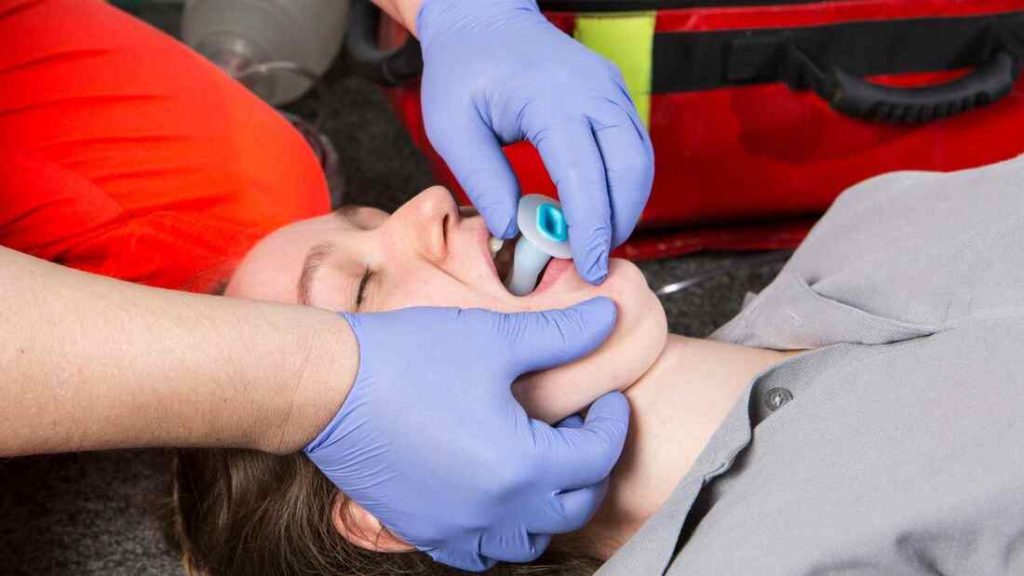Cardiac arrest demands immediate action. Every second counts when someone’s heart stops beating. Healthcare providers need reliable tools that work fast without compromising patient outcomes. Supraglottic airways have emerged as game-changing devices that are transforming how emergency responders manage airways during cardiopulmonary resuscitation.
Understanding Supraglottic Airways in Emergency Response
Supraglottic airways are advanced airway devices that sit above the vocal cords in the throat. Unlike traditional endotracheal tubes that require direct visualization of the vocal cords, these devices offer a simpler insertion method. The design allows emergency responders to secure a patient’s airway quickly during cardiac arrest situations.
Recent studies show these devices are gaining widespread acceptance. Research found a 90% first-pass success rate with the i-gel supraglottic device in out-of-hospital cardiac arrest situations. This high success rate means fewer delays in providing life-saving ventilation.
The American Heart Association’s 2025 guidelines acknowledge that no single advanced airway technique proves superior to others in terms of survival and neurological outcomes. This recognition validates supraglottic airways as effective alternatives to traditional intubation methods.
How Supraglottic Airways Improve CPR Outcomes
Time matters during cardiac arrest. Brain damage can occur within minutes without proper oxygen flow. Supraglottic airways address this urgency by enabling faster airway placement with minimal interruption to chest compressions.
Studies demonstrate that scene time was significantly shorter by 2 minutes when using supraglottic airways compared to endotracheal intubation. Those precious minutes can make the difference between life and death.
Furthermore, a meta-analysis of six randomized controlled trials involving 14,205 patients found that supraglottic devices showed advantages for achieving return of spontaneous circulation and survival to the hospital or emergency department. These findings suggest real-world benefits for cardiac arrest patients.
The devices also reduce the risk of complications. Misplaced endotracheal tubes represent a potentially fatal error during resuscitation. Supraglottic airways eliminate the risk of unrecognized esophageal intubation, making them safer alternatives in certain situations.
Benefits of Supraglottic Airways for Emergency Medical Services
Emergency medical services agencies across the United States are increasingly adopting supraglottic airways as first-line devices. Registry data show that supraglottic airway device use increased from 2016 through 2022, and agencies with lower survival rates before 2019 saw improved outcomes after switching from endotracheal intubation to supraglottic airways.
The training advantages are substantial. Learning to place supraglottic airways requires less time and practice than mastering endotracheal intubation. This accessibility means more emergency responders can confidently manage airways during critical situations.
Second-generation devices like the i-gel offer enhanced features. These modern supraglottic airways include improved pharyngeal seal pressure, esophageal drainage tubes, and integrated bite blocks. Such design improvements provide better airway protection during prolonged resuscitation efforts.
Supraglottic Airways vs. Traditional Intubation Methods
The debate between supraglottic airways and endotracheal intubation continues among healthcare professionals. Each method has specific advantages depending on the situation and provider skill level.
The 2025 European Resuscitation Council guidelines recommend that healthcare providers may perform either CPR with a ratio of 30 compressions to 2 ventilations or continuous chest compressions with asynchronous ventilations until the airway has been secured with a tracheal tube or supraglottic airway device.
Endotracheal intubation provides the most secure airway with maximum protection against aspiration. However, it requires significant skill and regular practice. The International Liaison Committee on Resuscitation recommends that tracheal intubation only be attempted by those with a high first-time success rate, defined as greater than 95% success within two attempts.
Supraglottic airways offer a middle ground. They provide more advanced airway management than bag-valve-mask ventilation while being easier to place than endotracheal tubes. This balance makes them ideal for many prehospital scenarios.
Training Requirements for Supraglottic Airway Placement
Proper training remains essential for effective supraglottic airway use. While these devices are easier to learn than traditional intubation, healthcare providers still need comprehensive instruction and regular practice.
A 2025 prospective study comparing six current-generation supraglottic airway devices found that different devices vary in their ability to create negative airway pressure and maintain adequate seals during automated CPR. This variation highlights the importance of understanding specific device characteristics.
Training programs should cover proper sizing, insertion techniques, troubleshooting, and recognition of placement problems. Providers must also learn when supraglottic airways are appropriate versus situations requiring endotracheal intubation.
The American Heart Association emphasizes that advanced airway strategies can be utilized in different settings while minimizing interruption in chest compressions. This patient-centered approach ensures the best possible outcomes during cardiac arrest.
Current Guidelines for Supraglottic Airways in CPR
The American Heart Association’s 2025 guidelines provide updated recommendations for airway management during cardiopulmonary resuscitation. Current protocols state that when qualified rescuers are present, an advanced airway such as an endotracheal tube or supraglottic airway is placed without interruption of chest compressions after initial CPR and defibrillation attempts.
These guidelines reflect a balanced approach. They recognize that effective chest compressions remain the foundation of successful resuscitation. Advanced airway placement should enhance, not interrupt, these critical compressions.
Healthcare providers must maintain focus on high-quality CPR fundamentals. Proper hand placement, adequate compression depth, appropriate rate, and complete chest recoil between compressions all contribute to better outcomes. Airway management complements these efforts.
The emphasis on minimizing interruptions represents a significant shift in resuscitation practice. Every second of stopped compressions reduces the likelihood of successful resuscitation. Supraglottic airways support this goal by enabling faster airway establishment.
Take Action: Master Life-Saving Skills Today
Understanding supraglottic airways represents just one component of comprehensive emergency cardiac care. Healthcare providers need regular training and certification to maintain their skills and stay current with evolving guidelines.
Whether you need initial certification or renewal, proper training ensures you can respond confidently during cardiac emergencies. Hands-on practice with realistic scenarios prepares you for the stress and urgency of actual cardiac arrests.
Ready to enhance your emergency response capabilities? Contact CPR Columbus today for CPR certification in Columbus and ACLS classes in Columbus. As an American Heart Association training site, CPR Columbus offers stress-free, hands-on instruction in BLS for Healthcare Providers, ACLS, PALS, and CPR and First Aid courses.
Don’t wait until an emergency strikes. Invest in your skills now and be prepared to save lives when it matters most. Visit CPR Columbus to schedule your certification or renewal class and join the ranks of confident, capable emergency responders making a difference in your community.





